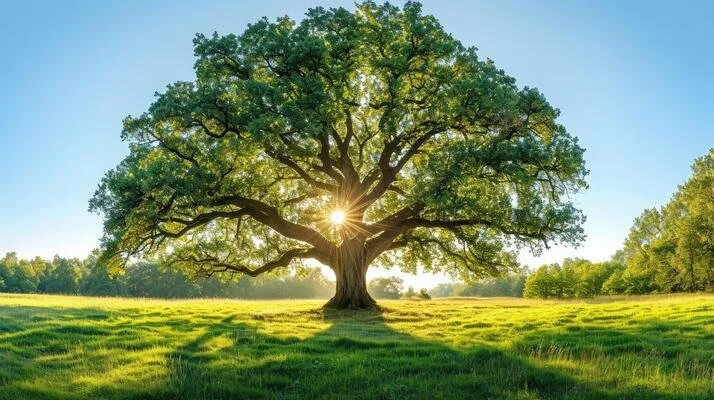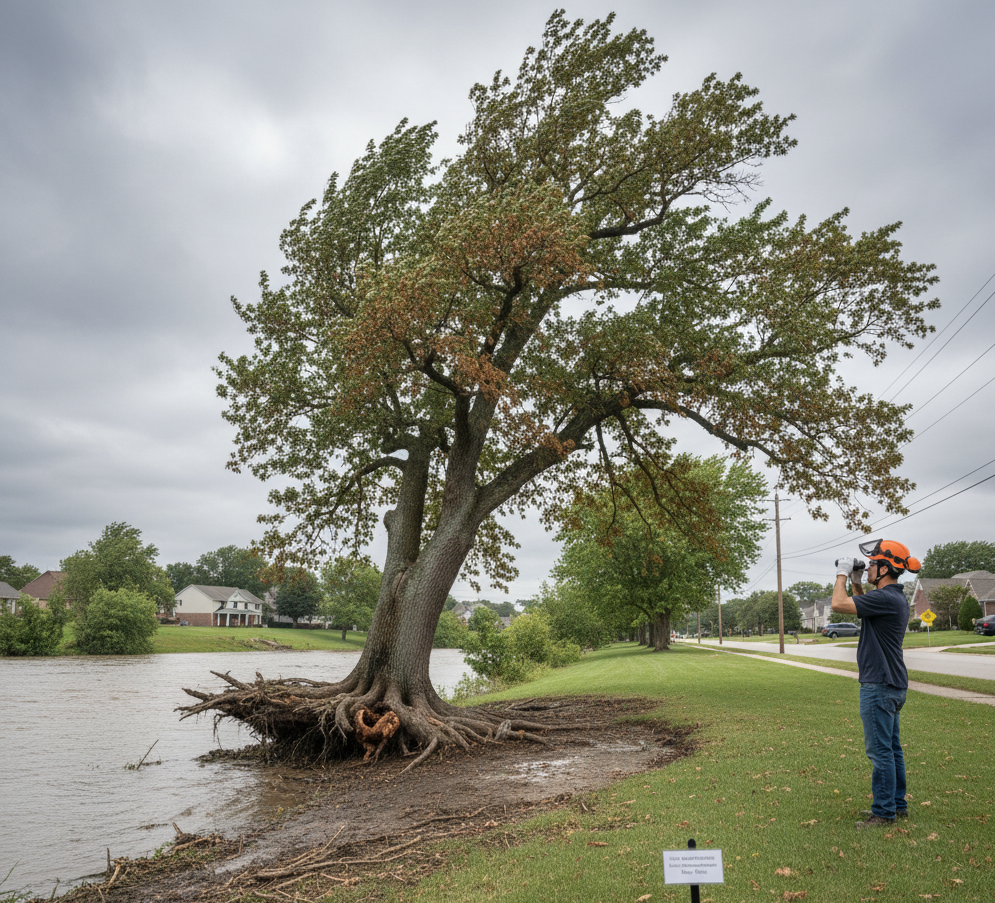Safeguarding Your Sanctuary: The Vital Role of Tree Risk Assessments
We had fun with some AI generated images in this article! Some of them are… Strange.
As an Arboricultural Consultant, I frequently encounter property owners who cherish the trees on their land, often for their aesthetic beauty, ecological benefits, and the invaluable amenity they provide. However, alongside these benefits comes a responsibility: ensuring these magnificent living structures are safe. This is where professional Tree Risk Assessments become not just a recommendation, but a crucial element in protecting your property and, more importantly, its occupants.
It's a common misconception that a tree standing tall and green is inherently safe… or unsafe. While many trees live out their lives without incident, others can develop defects that, if left unaddressed, could lead to limb failure or even complete tree collapse. Such events can cause significant damage to buildings, vehicles, and infrastructure, and pose a risk to life.
Beyond a Casual Glance: The Science of Tree Risk
A comprehensive Tree Risk Assessment goes far beyond a casual visual inspection. It's a systematic process undertaken by a qualified professional, adhering to established methodologies and drawing upon a deep understanding of tree biology, biomechanics, and environmental factors.
What exactly are we looking for?
1. Structural Defects:
This is often the primary focus. We meticulously examine the tree for signs of decay, cavities, cracks, weak unions (where branches join the main stem), and significant leans. For instance, a common concern might be a "co-dominant stem" – two main stems of similar size originating from the same point. If the union between these stems is weak or includes bark (bark growing inwards rather than outwards), it can be highly prone to failure, especially under high wind loads or heavy snow. We're looking for signs that might indicate a high probability of failure, as outlined in industry best practices.
2. Pest and Disease Identification:
Fungal fruiting bodies (mushrooms or brackets) can be indicators of internal decay, even when the exterior appears sound. Insect infestations can also compromise a tree's structural integrity. Early identification allows for targeted treatment or management strategies.
3. Root Collar and Root Zone Assessment:
The health of a tree starts underground. We inspect the root collar (where the stem meets the roots) for defects and assess the root plate for signs of instability or heaving. This is particularly critical in the built environment where root systems can be constrained by hard surfaces, foundations, or underground services. Even seemingly minor changes in soil levels, such as those caused by cut and fill operations during construction, can severely impact root health and anchorage, leading to instability over time.
4. Environmental Factors:
AI Image: yes, we wouldn’t stand that close to a falling tree… with binoculars?!
We consider the tree's immediate surroundings. Is it exposed to prevailing winds? Are there nearby excavations or changes in water tables that might affect its stability? Trees in flood zones, for example, might experience root damage from prolonged inundation, making them more susceptible to collapse.
5. Target Assessment:
Crucially, a risk assessment doesn't just evaluate the tree; it evaluates what or who could be impacted if the tree or a part of it failed (targets). This includes buildings, roads, footpaths, play areas, and even adjacent properties. The level of risk is a combination of the likelihood of failure and the severity of the consequences.
Proactive Management: Your Best Defence
A professional risk assessment provides a clear understanding of your trees' condition and any associated risks. More importantly, it offers actionable recommendations for mitigation. These might include:
Pruning: Removing dead, diseased, or weakly attached branches can significantly reduce the likelihood of failure.
Bracing or Cabling: For trees with structural weaknesses, support systems can be installed to enhance stability.
Pest and Disease Management: Targeted treatments can control or eradicate issues before they compromise structural integrity.
Monitoring: Some trees may not require immediate intervention but will benefit from regular re-inspection to track any changes in their condition.
Removal: In some cases, where the risk of failure is unacceptably high and cannot be reasonably mitigated, the difficult decision to remove a tree may be necessary.
In conclusion, investing in regular, professional Tree Risk Assessments is a sound decision for any property owner. It's a proactive measure that not only safeguards your physical assets but also demonstrates responsible stewardship of your natural environment. Don't wait for an incident to occur; understand the health of your trees and manage any risks effectively. Your property, and peace of mind, will thank you for it.







